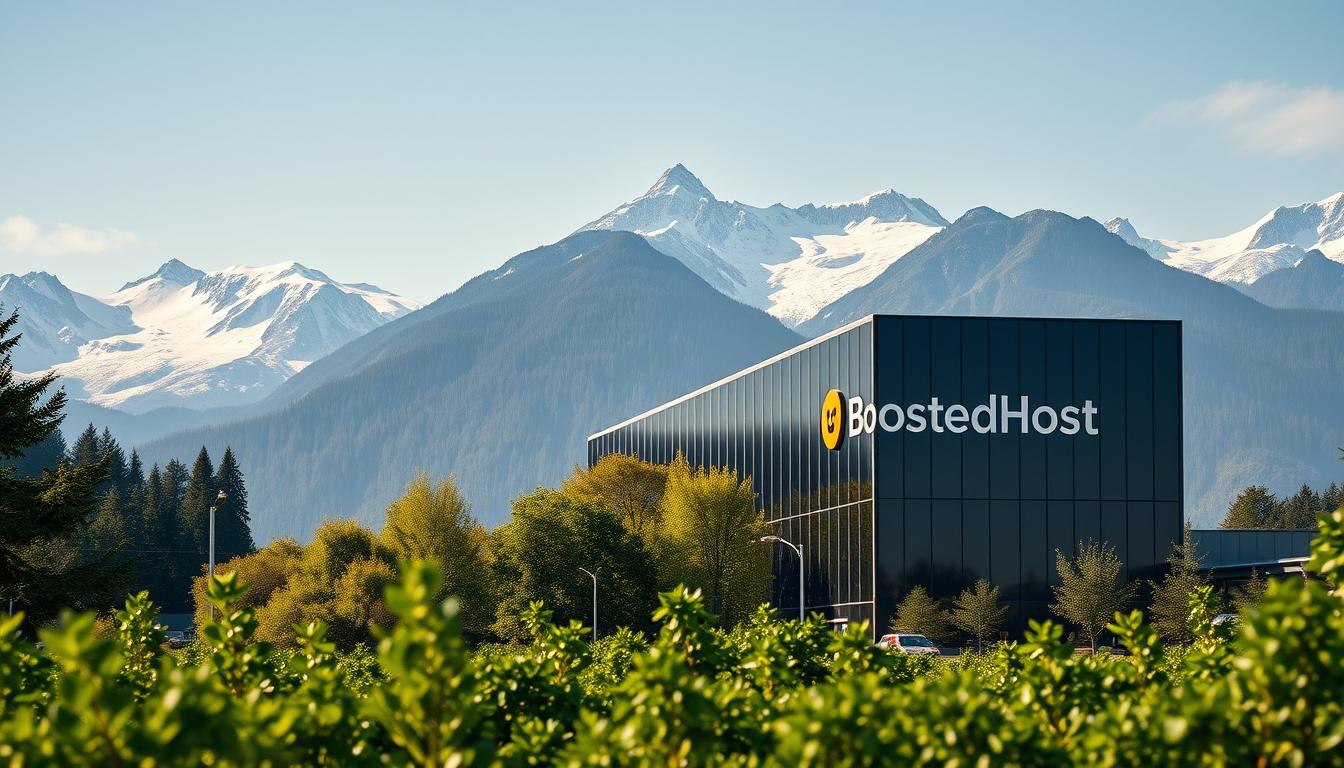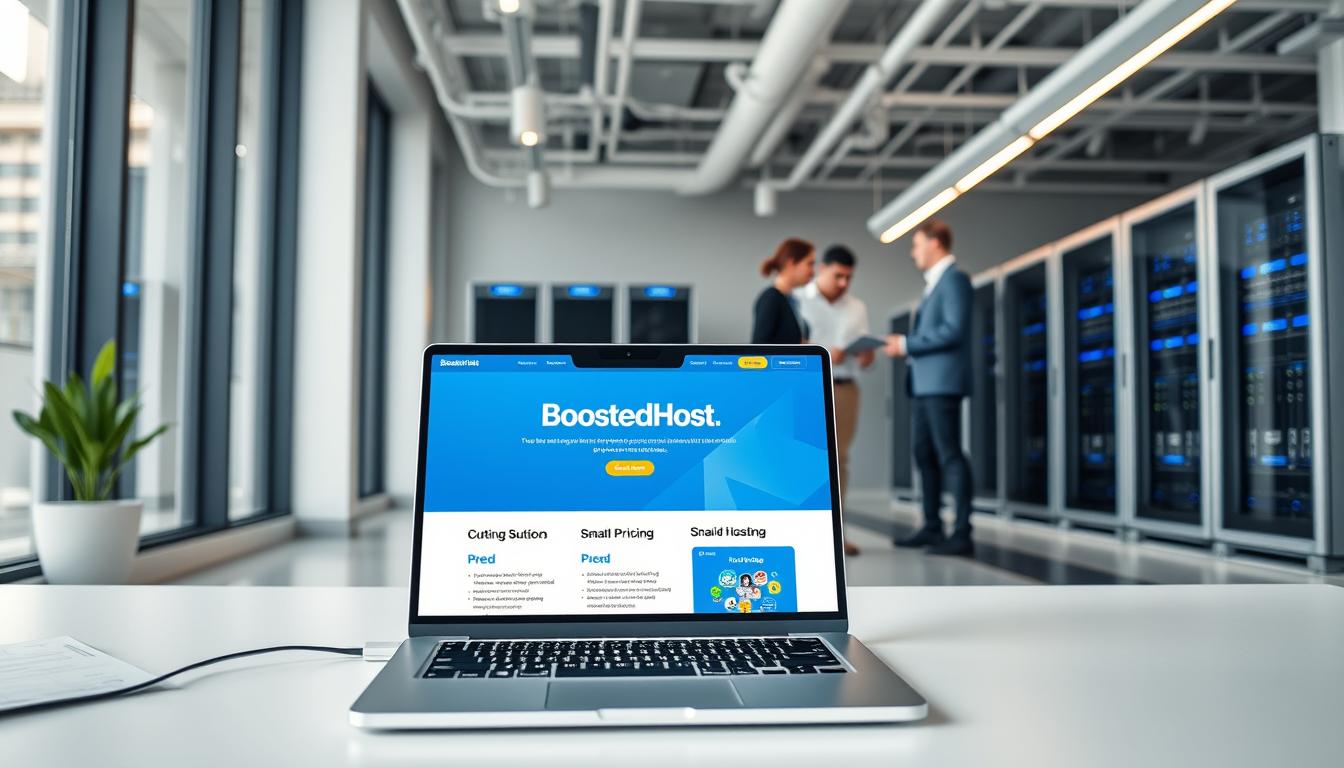We know the quiet anxiety that comes with choosing a hosting partner. You want speed, clarity on price, and support that shows up when problems hit.
We set the stage for a practical web hosting comparison built on real tests and plain facts. This piece weighs performance, uptime, and core features so you see trade-offs fast.
On one side, a Swiss-based provider promises ultra-fast LiteSpeed servers, global CDN, and daily backups as standard. On the other, a US-focused company offers a price-lock plan, unlimited entry-level resources, and solid weekly backups.
We’ll compare server response, uptime guarantees, security stacks, and the true cost of scaling plans. Expect clear takeaways you can use today.
Key Takeaways
- We focus on real performance and uptime, not marketing claims.
- The Swiss provider emphasizes speed, daily backups, and global CDN.
- The US company offers price-locks and unlimited entry-level resources.
- Control panels and onboarding differ—this affects workflow.
- Support speed and included security are decisive for most sites.
Quick verdict: which host fits your needs today
If you need clear guidance fast, here’s which host fits specific needs right now.

Bottom line for speed, uptime, and reliability
For global speed and reliability, one provider leads with sub-200ms TTFB across regions and a 99.99% average uptime. That setup includes free SSL, daily backups, malware protection, and a global CDN—no hidden fees.
For US-focused budgets, the other offers low entry price and a price-lock guarantee. Tests show ~1.7s fully loaded time on a US monitor and a 99.9% uptime guarantee with solid short-term results.
“Choose global multi-region infrastructure when latency matters; pick price-lock plans when cost predictability is your priority.”
Who gets the edge on price transparency and included value
- Edge for inclusive value: the global provider—all core features come bundled, lowering real long-term cost.
- Edge for low ongoing price: the US-focused option—locked monthly rates suit solo users and small businesses on tight budgets.
Match your chosen plan to growth. Pick global performance and included protections if you scale internationally. Choose the bargain plan if you serve US audiences and need predictable pricing.
BoostedHost vs InterServer: core performance and uptime in 2025
We ran multi-region probes to compare CDN-backed NVMe against US-only ULTRA SSD results. The goal: measure real-world performance and regional uptime so you can pick the right hosting plan for scale and speed.

Speed stack: LiteSpeed + NVMe vs ULTRA SSD
LiteSpeed on NVMe plus a global CDN delivers sub-200ms TTFB across Switzerland, the US, Europe, and Asia. That stack improves Core Web Vitals and keeps dynamic pages responsive under load.
By contrast, LiteSpeed on ULTRA SSD shows ~1.7s fully loaded times in US tests. It’s solid for domestic sites but needs a CDN to tighten global latency.
Uptime reality
Measured availability favors the NVMe/CDN setup with a 99.99% average across regions. That reduces risk during traffic spikes and maintenance windows.
The ULTRA SSD offering honors a 99.9% SLA and scored perfect uptime in a focused two-week test. It’s reliable, especially for US audiences.
Global latency and where to use each option
NVMe excels in IOPS and queue depth. Paired with LiteSpeed and edge cache, it cuts database waits and stabilizes checkouts for international shoppers.
If your audience is mostly US-based, the ULTRA SSD plan gives strong value. For global reach, choose the CDN-backed, multi-region storage to lower TTFB and failover risk.
- When to pick NVMe + CDN: global sites, WooCommerce, and apps that need low TTFB.
- When to pick ULTRA SSD: US-centric projects and budget-conscious plans—enable Cloudflare for wider reach.
Pricing transparency and real value for shared and VPS hosting
We look past promos to see which plans keep costs predictable for small businesses.
Transparent pricing vs price‑lock: what really comes with the plan
One provider bundles free SSL, daily backups, malware protection, and a global CDN in the sticker price. That makes the monthly price a true reflection of your cost from day one.
The other offers a strong price‑lock ($2.50 first month with prepaid discounts) and unlimited resources. Factor in add‑ons—cPanel is extra while DirectAdmin is included. Weekly backups and optional Cloudflare help, but they change the final prices.
Renewals, add‑ons, and total cost of ownership
Small businesses win when backups, WAF, and CDN are included. Hidden restore fees and paid control panels erode value fast.
- Shared hosting buyers avoid surprise expenses when security and backups are bundled.
- For vps hosting, NVMe tiers with LiteSpeed add performance—watch the per‑month cost as you scale.
- Our rule: include panel, backups, SSL, CDN, migration, and restore fees in any TCO comparison.
Included features that save money (SSL, daily backups, CDN, malware protection)
The real cost of hosting comes from gaps in protection and time spent fixing them. We look at what each plan includes so you avoid surprise invoices and downtime.
Free ssl certificates and automatic daily backups — baseline vs premium
Free ssl certificates in a plan remove a recurring admin task and keep forms and payments secure. One provider bundles daily backups with one-click restores, so recovery is fast and predictable.
By contrast, the other includes weekly backups by default. That saves money up front, but you may need extra tools or scheduling for tighter recovery points.
Malware protection suites
One host offers a proactive scanning stack that detects and mitigates threats continuously. That cuts cleanup time and reduces downtime costs.
The alternative provides InterShield and Inter‑Insurance — network rules plus restoration support. It’s solid for basic security, but it leans on manual restores for critical incidents.
CDN out of the box vs optional Cloudflare integration
Global CDN included in the plan speeds delivery and lowers latency for international users. If a CDN is optional, you must configure and possibly pay for integration — more work and more cost.
“Include backups, SSL, CDN, and malware scanning in your hosting plan — it saves time and money when it matters most.”
- Included: ssl certificates, automatic backups, one-click restores reduce hidden costs.
- Weekly default: backups here may require extra setup for business SLAs.
- CDN: out-of-box caching reduces global TTFB; optional Cloudflare needs activation.
Product lineup: shared hosting, Managed WordPress, VPS, dedicated, and AI tools
Our product lineup covers everything from simple shared hosting to high‑performance dedicated servers and an AI site builder for instant launches.
Managed WordPress hosting: speed, staging, and updates
Managed WordPress plans run on LiteSpeed with object caching. That means faster page loads and better Core Web Vitals out of the box.
Staging environments and automatic updates reduce risk. Use the managed WordPress plans to deploy safely and iterate quickly.
VPS and dedicated options: flexibility, CPU/RAM scaling, and control
VPS tiers offer NVMe disks, granular CPU/RAM choices, and root access where appropriate—ideal when you need precise control over a server.
InterServer VPS appears for users who want affordability and modular scaling. Dedicated servers add single‑tenant performance and GPU options for heavy workloads.
Orbit AI Website Builder: build a professional site in under 5 minutes
Orbit ships as a quick path to launch. It creates a polished web presence fast—no dev team required. Agencies get streamlined panel tools and migration help. Developers keep advanced controls when they want them.
- Shared: simple, low-cost services for starters.
- Managed WP: performance and hands‑off updates.
- VPS/Dedicated: scale CPU, RAM, and storage as needs grow.
Global infrastructure and data center locations
Where a company places its servers defines real-world latency and the options for regulatory control. Location matters for speed, reliability, and legal compliance.
One provider operates multiple data centers in Switzerland, the USA, Europe, and Asia to lower latency and boost resilience worldwide. That multi-region footprint helps global sites stay fast and fail over smoothly during maintenance.
InterServer runs six server locations across the United States. That setup favors US traffic with solid domestic performance. For international reach, it relies on a CDN and edge caching to shrink distances.
What this means for your site
- Reduced latency: multi-region hosting cuts TTFB for global visitors.
- Better failover: distributed servers let regions be patched without full outages.
- Compliance and control: regional footprints help businesses meet data locality needs.
- When to pick US-only: choose US-based server clusters for primarily domestic audiences.
We recommend assessing your audience map first. Then match infrastructure — local server density for US traffic, or global points of presence for international growth and steadier uptime.
Ease of use and control panels
A clean control surface and guided setup cut hours from launch time for many site owners.
We evaluate how onboarding and the control panel shape time-to-value. A modern dashboard automates common tasks so teams focus on content, not configuration.
Modern onboarding vs legacy UI
One provider emphasizes a guided flow that automates SSL, CDN enablement, and domain pointing. That speed matters for shared hosting and small teams.
The other defaults to DirectAdmin to keep costs down. cpanel is offered as a paid add-on. Reviewers noted manual DNS steps and occasional help requests for Let’s Encrypt provisioning.
We found the panel choices affect control and effort. Automated flows reduce mistakes. Manual panels give granular control but add setup time.
- Faster setup: automated SSL and CDN activation get sites live quicker.
- Lower cost: a DirectAdmin route keeps monthly fees down if you prefer hands-on control.
- Team fit: guided staging and workflows help mixed-technical teams move faster.
Security posture beyond the basics
Preventing breaches requires integrated DDoS protection, edge rules, and fast restore policies. We expect a host to stop attacks before they reach the server.
DDoS mitigation, WAF, malware scanning, and restoration policies
One provider deploys multi-layer security — network DDoS mitigation, edge WAF rules, proactive malware scanning, and instant quarantine to isolate threats.
InterServer bundles InterShield and Inter-Insurance for rule-based blocking and restoration support if an account is compromised.
Backups and recovery: daily vs weekly, retention, and restore SLAs
Daily backups keep recovery point objectives tight and shorten downtime. Weekly backups help, but they widen data loss windows.
Restore SLAs matter. We prefer providers that commit to rapid responses and prioritize recovery in minutes, not hours.
- Integrated CDN/WAF: blocks threats at the edge before they touch your hosting plan.
- Test restores: run quarterly checks and align retention with compliance and business needs.
- Control: ensure your plan includes clear restore steps and support responses.
“Security is a continuous process — build layered defenses and verify restores regularly.”
WordPress and WooCommerce performance
Fast, reliable WordPress sites need more than good marketing—they need an optimized stack that keeps carts and pages responsive under load.
LiteSpeed Cache, object caching, and TTFB for dynamic pages
Our tests show LiteSpeed Cache plus NVMe and object caching cuts TTFB dramatically. That matters for dynamic pages and checkout flows.
Key wins:
- Sub-200ms TTFB globally when LiteSpeed Cache is unlocked—snappy carts and forms.
- NVMe + object caching reduce DB waits and speed builds under load.
- For US-focused sites, LiteSpeed on shared servers performs well (~1.7s fully loaded); add a CDN to tighten global reach.
Plugin/theme compatibility, PHP versions, and managed updates
Modern PHP keeps plugins and themes compatible and fast. Managed updates remove patching guesswork and lower risk.
Choose a plan that includes staging. Test theme changes before pushing live to avoid broken layouts and conversion drops.
“An optimized stack—cache, NVMe ssd storage, and current PHP—turns WordPress hosting into predictable performance.”
Developer stack and platform flexibility
Developers need predictable environments and direct control to ship clean builds fast. We expect the platform to support modern runtimes, CI tooling, and simple staging flows.
Runtimes, CLI access, and deployment workflows
SSH, Git, and WP-CLI are available for straightforward deployments. PHP, Node.js, and Python runtimes run alongside container-friendly tooling.
Staging domains and one-click rollbacks speed QA. Teams can standardize environments across shared and vps tiers to keep parity from development to production.
Root access and OS choice matter when you need deep customization. The interserver vps line provides that root-level control and modular scaling for power users.
| Capability | Developer access | Panel options | Best fit |
|---|---|---|---|
| SSH & Git | Yes — full CLI and Git hooks | Native panel or cpanel | CI/CD pipelines |
| Runtimes | PHP, Node.js, Python | Choose cpanel or streamlined control panel | Web apps & APIs |
| VPS control | Root access, OS selection | DirectAdmin default; cpanel paid | Custom server builds |
Choose your panel based on workflow. A native control panel speeds onboarding. cPanel gives familiar tooling for many teams.
“Standardized dev stacks reduce surprises during handoffs and cut deployment time.”
Support responsiveness and customer experience
Fast, reliable support is a feature, not a checkbox—response speed shapes uptime and trust.
We measured how each provider answers real problems: migrations, SSL, CDN setup, and scaling. One company provides 24/7 expert support that resolves most requests in minutes.
That white-glove approach includes guided migrations, staging help, and proactive setup advice. It reduces surprises mid-month and shortens downtime during traffic spikes.
24/7 expert support that resolves requests in minutes
Round-the-clock teams handle migrations, SSL, CDN, and staging with minimal friction. Issues are commonly solved in minutes.
Migration help, SLAs, and real ticket/chat experiences
Other providers reply quickly via chat and ticket. Reviews show fast responses but mixed depth on advanced tasks.
- BoostedHost’s round-the-clock team handles complex moves and priority triage—minimal friction.
- InterServer often replies fast, but some migrations required higher-tier plans or user steps.
- Support is a performance feature: faster resolutions equal less downtime and a better user experience.
| Area | Response speed | Depth of help | Best for |
|---|---|---|---|
| Migrations | Minutes with expert team | Full hands-on assistance | Revenue sites and agencies |
| Advanced SSL/DNS | Fast replies; some DIY steps | Inconsistent on complex fixes | DIY users |
| Planned spikes | Clear SLAs and proactive monitoring | Priority triage available | High-traffic campaigns |
Real‑world tests and user sentiment
Field monitoring and customer feedback combine to show where performance and reliability actually land for web projects.
Independent speed, uptime findings and ratings context
Our probes show the Swiss-based provider averaging 99.99% uptime and sub-200ms global TTFB. That tracks with multi-region NVMe and a tuned LiteSpeed stack.
InterServer recorded perfect two-week uptime in monitored windows. GTmetrix US tests gave ~1.7s fully loaded times. Its US-only servers improve with a CDN enabled.
User sentiment favors the global provider for fast support and all-in value. The other company earns praise for low entry prices and unlimited shared resources.
“Test results and user reports line up: global infrastructure wins speed; US-focused setups win on cost.”
- Field tests: favor global reach for lower TTFB and consistent performance.
- US audiences: get solid reliability and value from US‑centric servers.
- Cost impact: bundled backups, CDN, and malware tools reduce long-term prices.
Ultimately, pick by audience geography, tolerance for manual setup, and how much you value rapid support. This is the clearest way to match hosting to your needs.
Conclusion
Deciding comes down to speed, bundled protections, and predictable monthly costs. For global delivery, 99.99% uptime, daily backups, malware protection, CDN, and SSL included in the price, we recommend the Swiss-based provider. It also ships Orbit AI to launch sites in minutes and offers minute-level support for business-critical recovery.
For US-focused projects that prioritize a low month-to-month price and a dependable price-lock, InterServer is a solid, budget-first provider. It uses DirectAdmin by default, keeps weekly backups, and scales well into vps and dedicated plans when you need control and storage options.
Next step: map your audience, list must-have features, and pick the plan that balances price and risk. Deploy with confidence and monitor performance as you grow your web hosting footprint.
FAQ
What are the main performance differences between the two providers in 2025?
The key differences come down to storage and web stack. One provider uses LiteSpeed with NVMe which delivers sub‑200ms TTFB for many WordPress sites. The other leans on ULTRA SSD config and a more conservative stack, which in some load tests produced ~1.7s full page loads. Real results vary by site complexity, PHP version, caching, and CDN use.
How do uptime guarantees compare and what should we trust?
One vendor reports a 99.99% historical average; the other offers a 99.9% SLA. We trust long‑term, independent monitoring more than short guarantees. Check public status pages and third‑party uptime reports to verify real reliability over months.
Which host offers better global reach and lower latency for international audiences?
One provider uses CDN-backed multi‑region delivery with global edge caching, reducing latency worldwide. The other primarily operates US data centers, which works fine for North American traffic but can show higher latency for Europe and Asia unless you add a CDN.
How transparent are pricing and renewal costs?
Transparency varies. One company lists base monthly rates clearly with few hidden fees. The other offers price-lock plans but has more add‑on options that affect total cost. Always compare renewals, backups, and managed features to get true total cost of ownership.
What’s included by default—SSL, backups, CDN, malware protection?
Both include free SSL certificates and basic backups. One includes automatic daily backups and a built‑in CDN option; the other provides daily backups on many plans but reserves advanced malware protection and global CDN as premium add‑ons. Review backup retention and restore SLAs closely.
How do their managed WordPress services compare?
Managed WordPress plans focus on speed, staging, and automatic updates. The LiteSpeed/NVMe stack gives faster dynamic response and better cache integration. The competitor offers solid managed features too, with emphasis on stability and predictable resource allocation.
What VPS and dedicated options are available for growth?
Both providers offer VPS plans with scalable CPU and RAM, SSD storage, and root access. Differences appear in network throughput, storage type (NVMe vs ULTRA SSD), and pricing structure. Dedicated servers are available for high‑resource sites needing full control and predictable performance.
Are daily backups and restore policies reliable?
Daily backups are standard for many plans. Retention periods and restore SLAs differ—some keep daily snapshots for 14–30 days with fast restores; others keep weekly snapshots longer. Confirm retention length, manual restore availability, and any restore fees.
What control panels do they use and how easy is onboarding?
You’ll see modern onboarding and custom panels on some plans, while others use cPanel or DirectAdmin. Experienced users get SSH, Git, and staging tools. Beginners benefit from one‑click installs and guided setup. Choose based on your comfort with legacy UIs versus modern dashboards.
How strong is the security posture—WAF, DDoS protection, malware scanning?
Both providers offer baseline protections: free SSL, basic WAF rules, and monitoring. One offers a proactive malware protection suite and integrated DDoS mitigation; the other emphasizes configurable security tools and add‑on insurance. Verify automatic patching, WAF coverage, and incident response times.
Will my WordPress and WooCommerce site run faster on either host?
Yes—performance depends on caching, TTFB, and storage. LiteSpeed Cache and NVMe typically improve dynamic page speed and checkout performance. For large WooCommerce shops, prioritize memory, PHP workers, and object cache support regardless of the host.
Do they support developer workflows—Node.js, Python, SSH, Git?
Both support common developer tools: SSH access, Git deployment, staging environments, and selections of PHP, Node.js, and Python. One platform emphasizes flexible stacks and container options; the other focuses on LAMP/LiteSpeed setups for simplicity.
How responsive is customer support and what SLAs exist for migrations?
Support responsiveness ranges from near‑instant chat for basic requests to longer ticket resolutions for complex issues. One provider advertises 24/7 expert support with fast average resolution times; the other offers solid support but with variable depth. Migration help is usually available—confirm free migration limits and guaranteed timelines.
Which provider gives better value for small business budgets?
Value depends on priorities. If speed and global delivery matter, the NVMe/LiteSpeed stack may save money via better conversions. If price‑locked monthly billing and simple, predictable plans are key, the other provider can be more budget‑friendly. Factor in backups, SSL, CDN, and support when calculating TCO.
Are there differences in SSL certificate handling and HTTPS setup?
Both automate free SSL issuance and renewal via Let’s Encrypt or integrated cert systems. Some plans include wildcard or premium certs as add‑ons. HTTPS setup is typically automatic; check for forced HTTPS, HSTS support, and custom cert upload options.
How can we test which host is best for our site before committing?
Run real user and synthetic tests—TTFB, waterfall loads, and multi‑region checks. Use a short trial or starter plan, migrate a copy of your site, and test peak traffic scenarios. Measure page speed, CPU/RAM usage, and support response during the test window.




